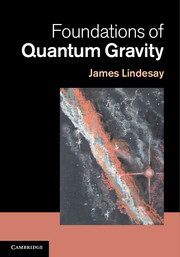Book contents
- Frontmatter
- Contents
- Preface
- Notations and Conventions
- Introduction
- Part I Galilean and special relativity
- Part II General relativity
- 5 Fundamentals of general relativity
- 6 Quantum mechanics in curved space-time backgrounds
- 7 The physics of horizons and trapping regions
- 8 Cosmology
- 9 Gravitation of interacting systems
- Appendix A Addendum for Chapter 1
- Appendix B Addendum for Chapter 2
- Appendix C Addendum for Chapter 3
- Appendix D Addendum for Chapter 4
- Appendix E Addendum for Chapter 5
- Appendix F Addendum for Chapter 7
- Appendix G Addendum for Chapter 8
- References
- Index
5 - Fundamentals of general relativity
from Part II - General relativity
Published online by Cambridge University Press: 05 July 2013
- Frontmatter
- Contents
- Preface
- Notations and Conventions
- Introduction
- Part I Galilean and special relativity
- Part II General relativity
- 5 Fundamentals of general relativity
- 6 Quantum mechanics in curved space-time backgrounds
- 7 The physics of horizons and trapping regions
- 8 Cosmology
- 9 Gravitation of interacting systems
- Appendix A Addendum for Chapter 1
- Appendix B Addendum for Chapter 2
- Appendix C Addendum for Chapter 3
- Appendix D Addendum for Chapter 4
- Appendix E Addendum for Chapter 5
- Appendix F Addendum for Chapter 7
- Appendix G Addendum for Chapter 8
- References
- Index
Summary
From special to general relativity
In general relativity, the “force of gravity”, which directly couples to a gravitating body through its mass, is replaced by relationships between geometric coordinates. This can be done because the inertial mass that relates the acceleration of a body from rest (a purely geometrical aspect) to the force through Newton's second law F = ma, is the same as the gravitational mass that couples the gravitational acceleration g to that body Fgravitation = mg. Newton tested this equivalence using various pendulums, and Eotvos [75] in 1889 verified the equivalence of inertial and gravitational mass to better than one part in 109. Gravity attracts different masses in a way that results in the differing masses having the same accelerations. This tenet embodies the equivalence principle, which will be discussed next. Since bodies of vastly differing constitutions and masses gravitate equivalently, one can then construct the trajectories of general gravitating masses in terms of geometric geodesies (special curves in the space-time), independent of the mass, charge, or internal structure of the gravitating body.
The principle of equivalence
The principle of equivalence forms the conceptual foundation of early formulations of the theory of general relativity. For present purposes, the principle of equivalence will be stated as follows: At every space-time point in an arbitrary gravitational field, it is possible to choose a locally inertial coordinate system such that (within a sufficiently small region of that point) the laws of nature take the same form as in an unaccelerated Minkowski coordinate system in the absence of gravity. Such an assertion inherently relates the inertial mass to the gravitational mass.
Information
- Type
- Chapter
- Information
- Foundations of Quantum Gravity , pp. 205 - 244Publisher: Cambridge University PressPrint publication year: 2013
